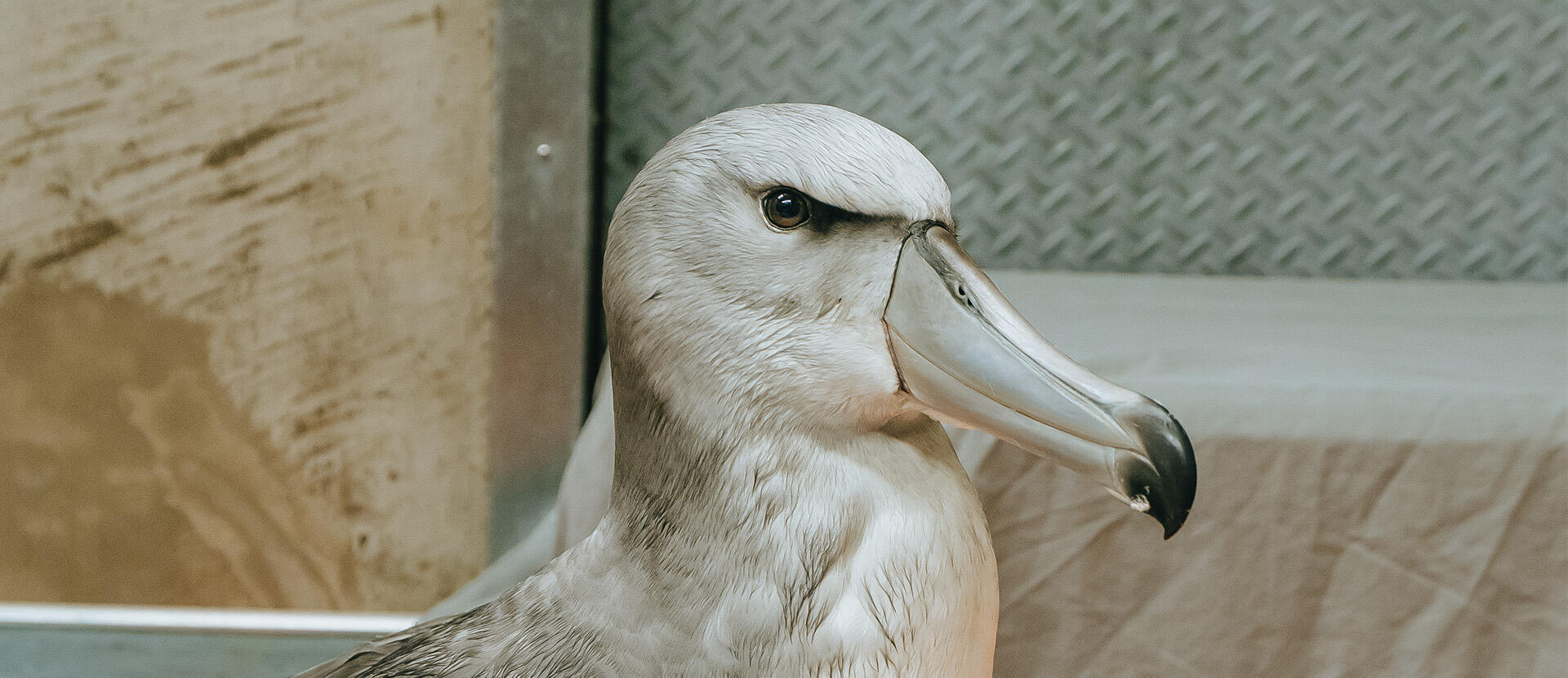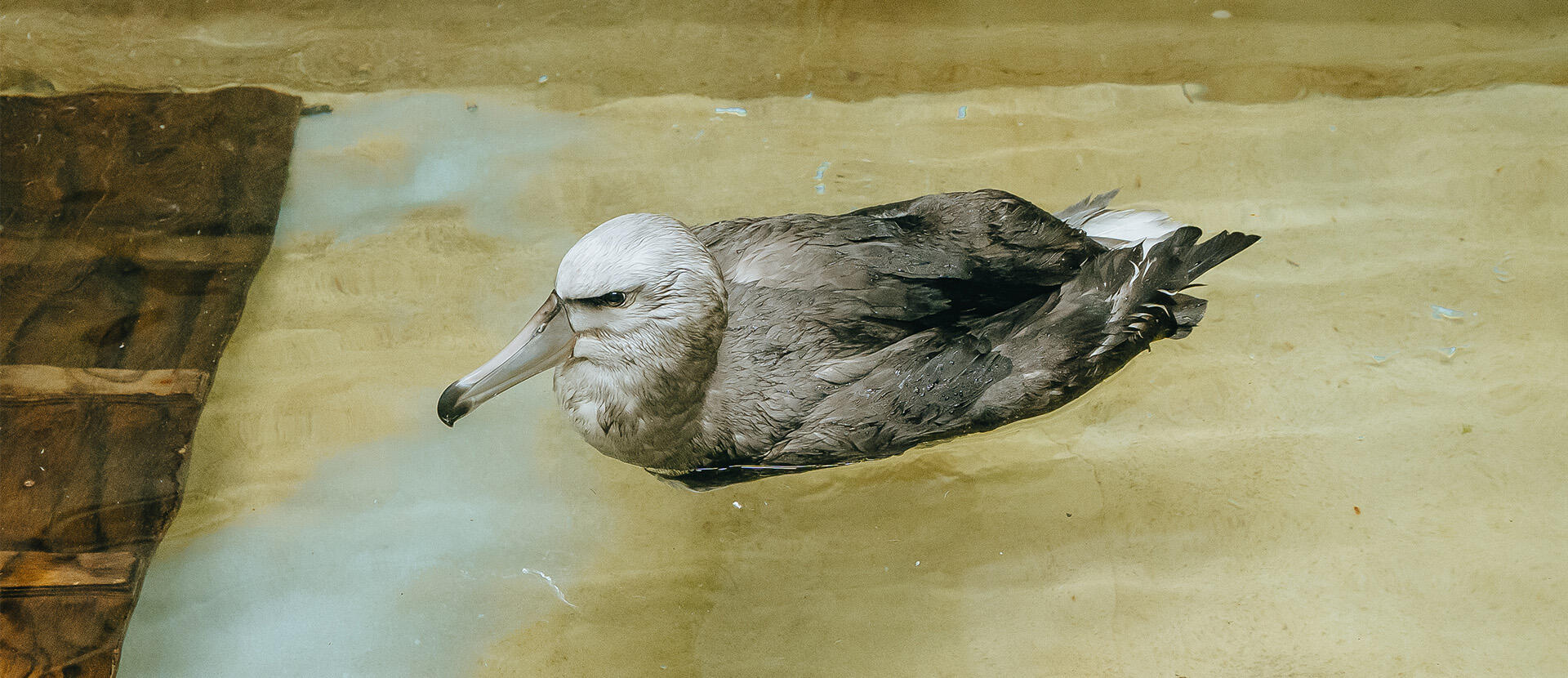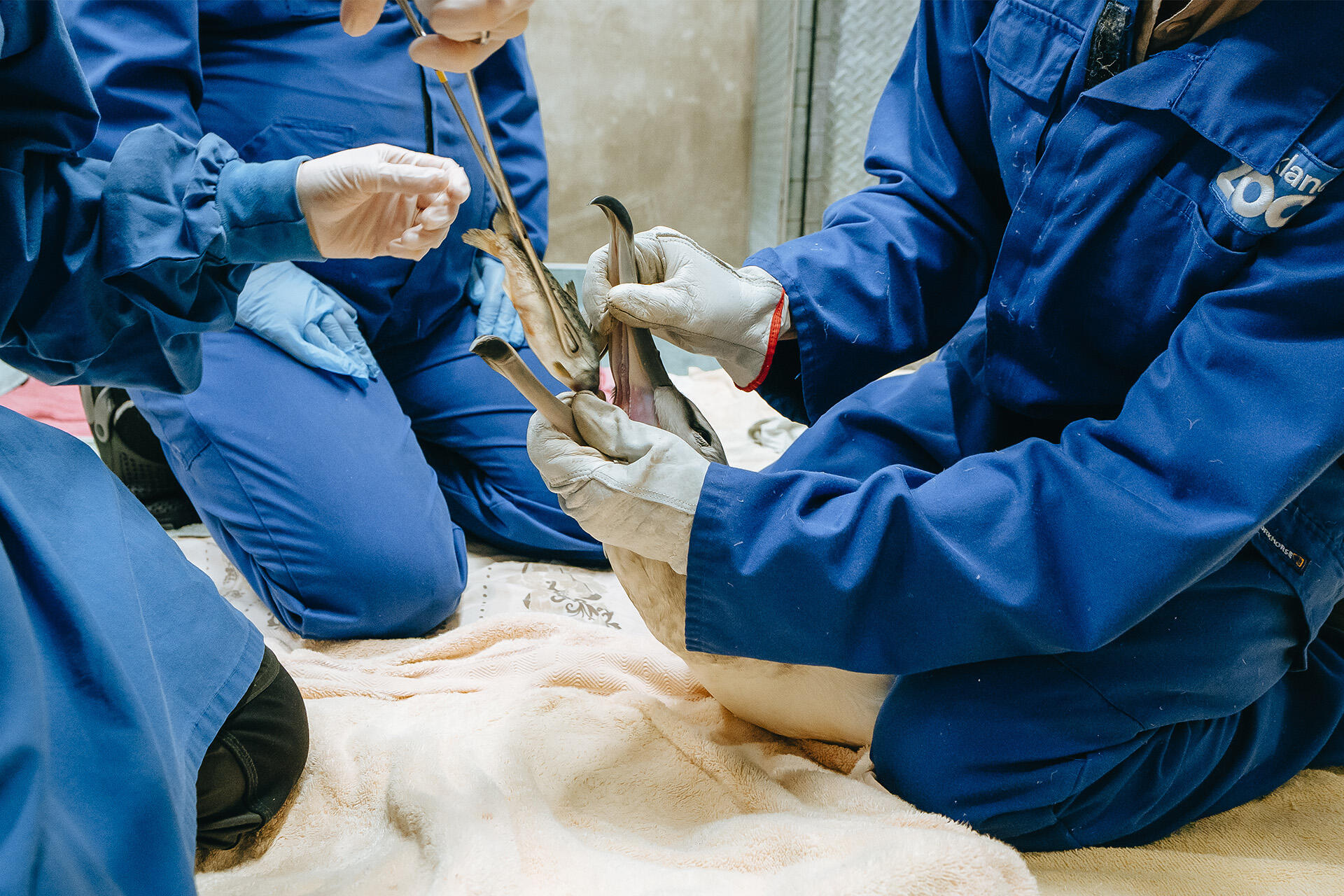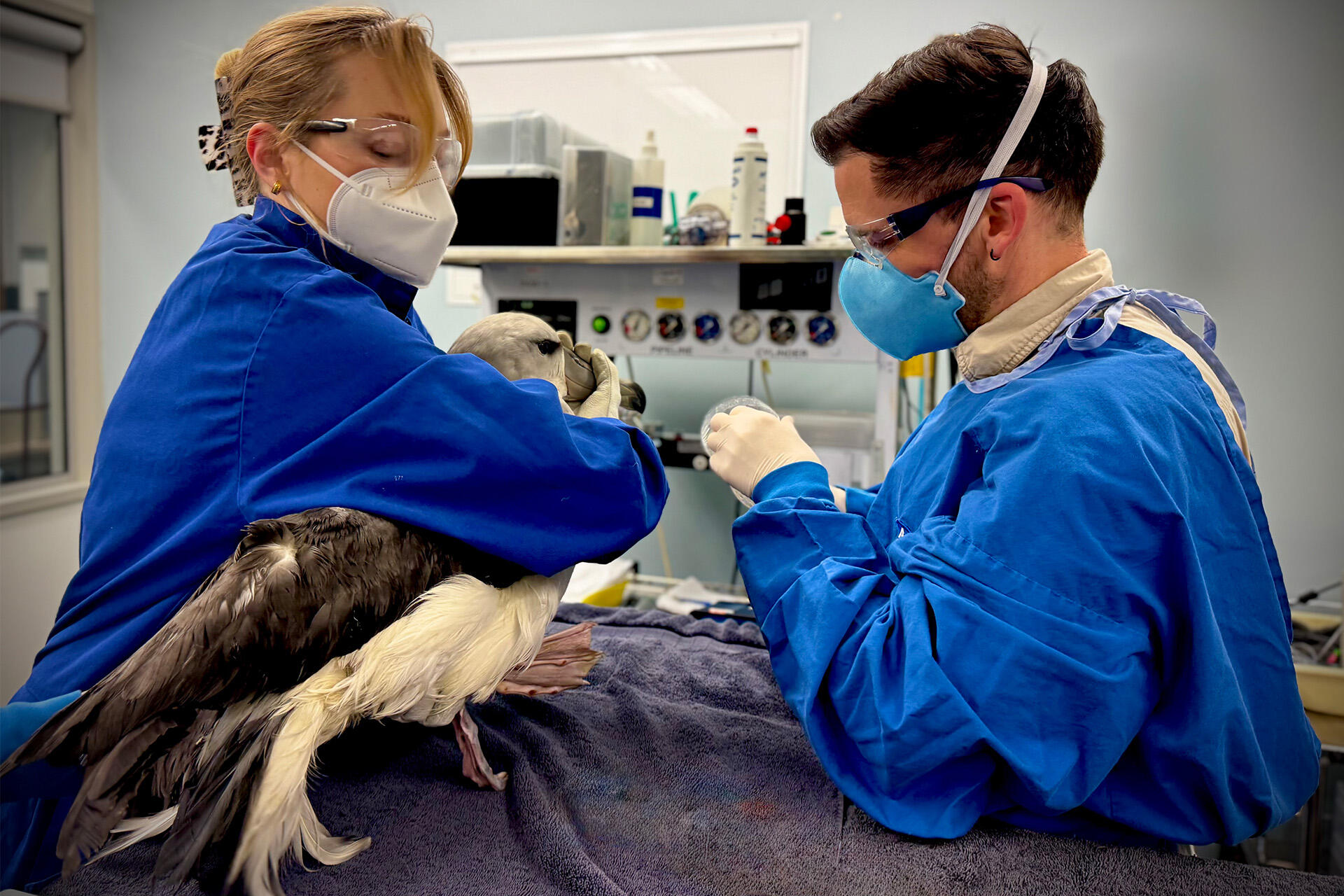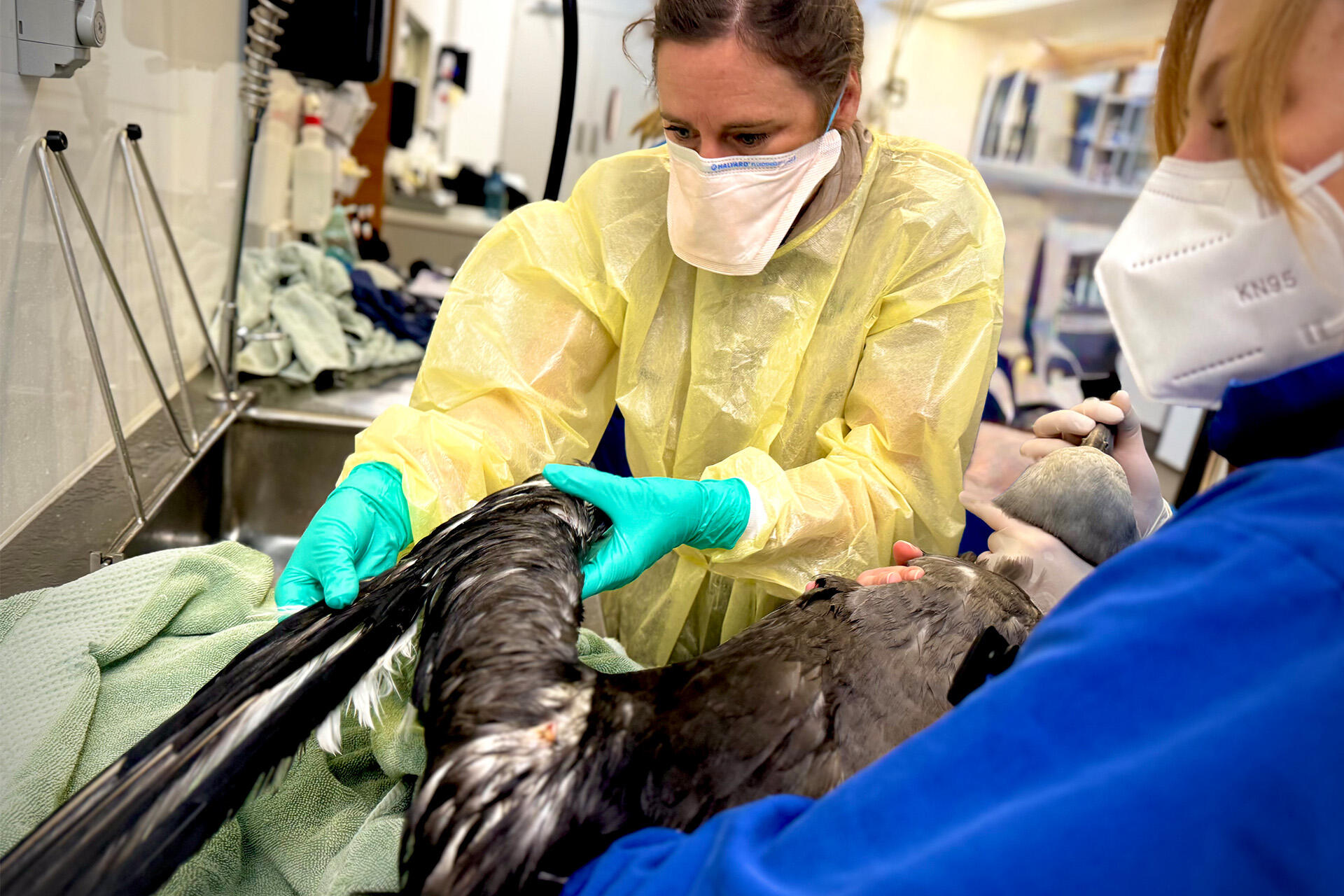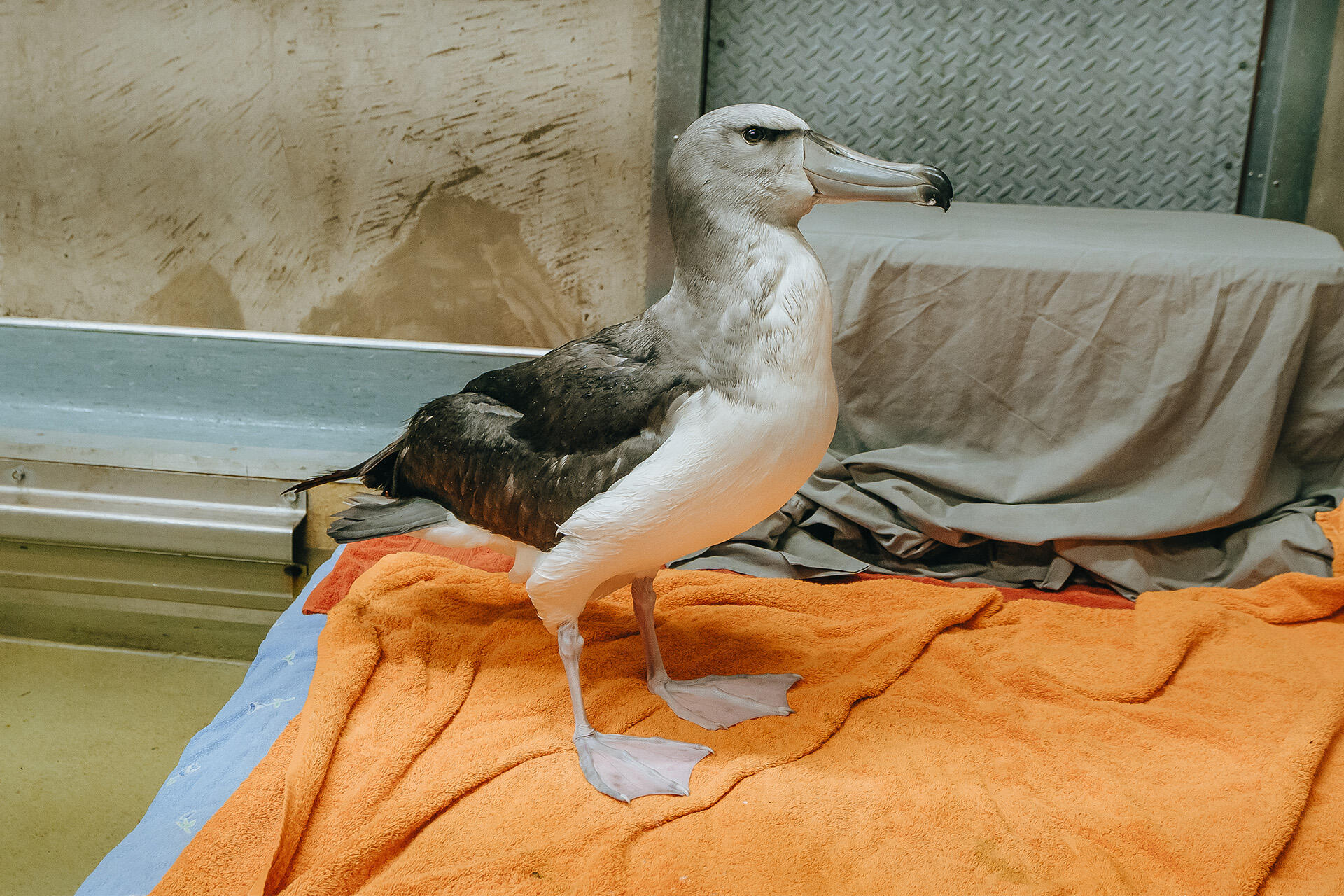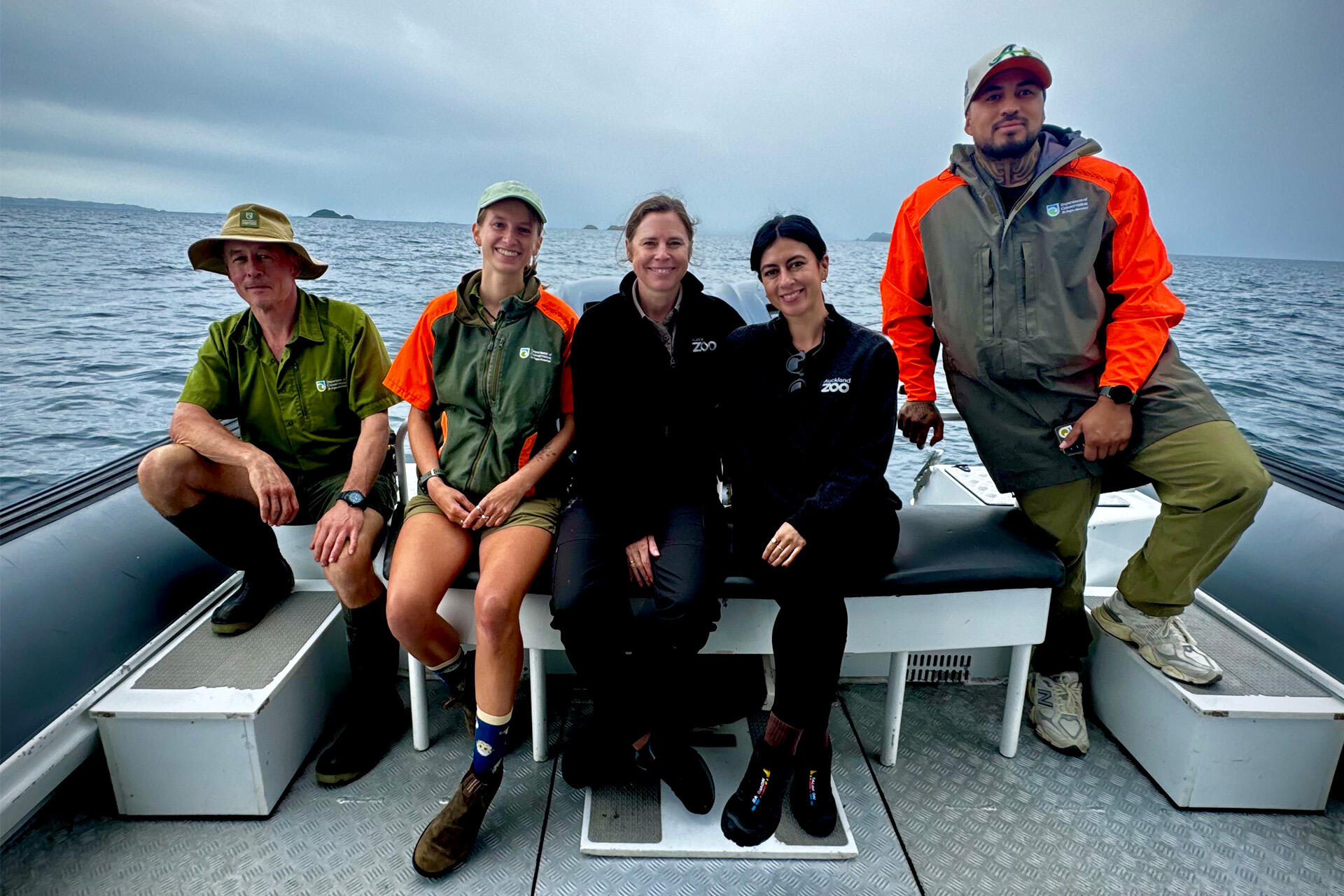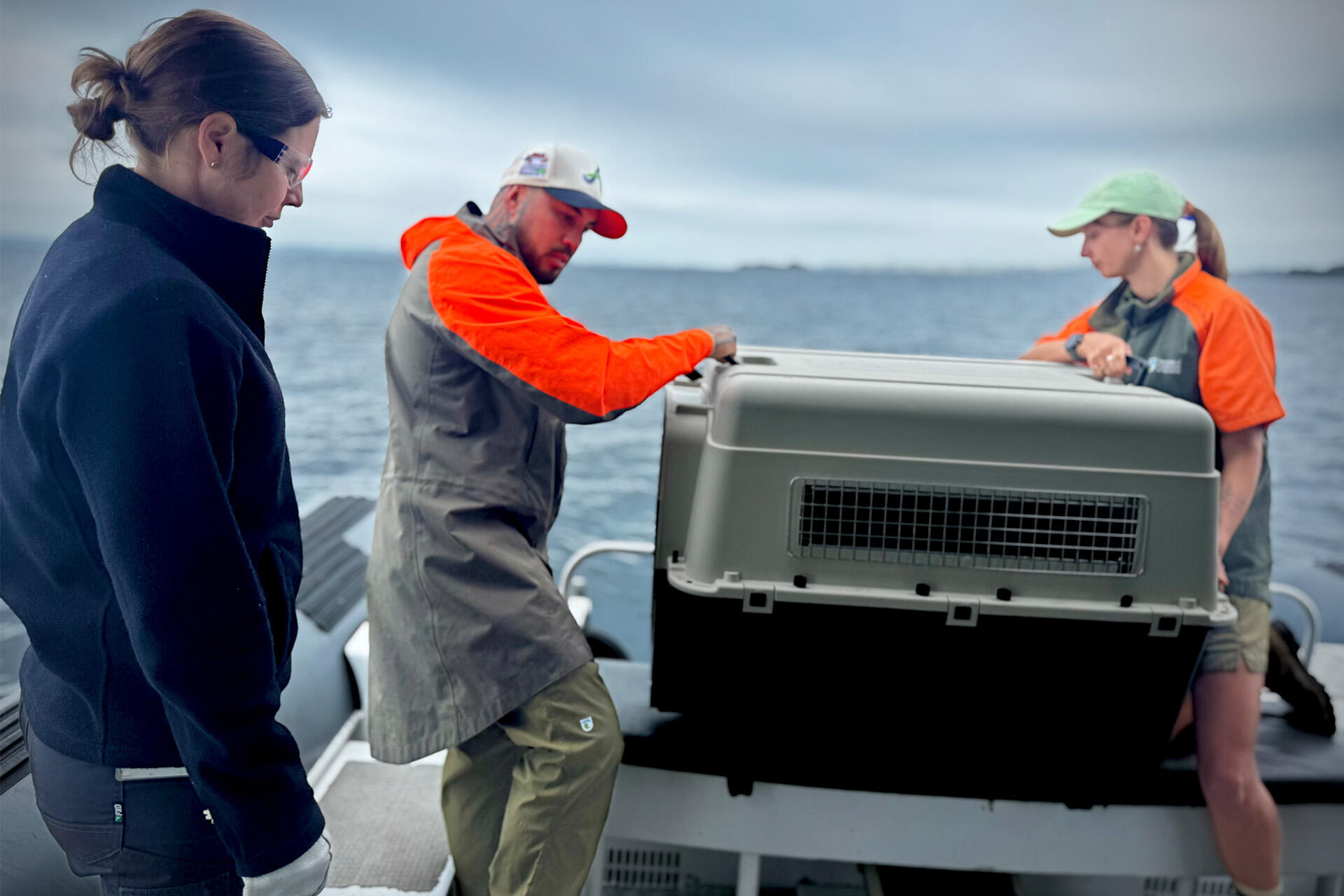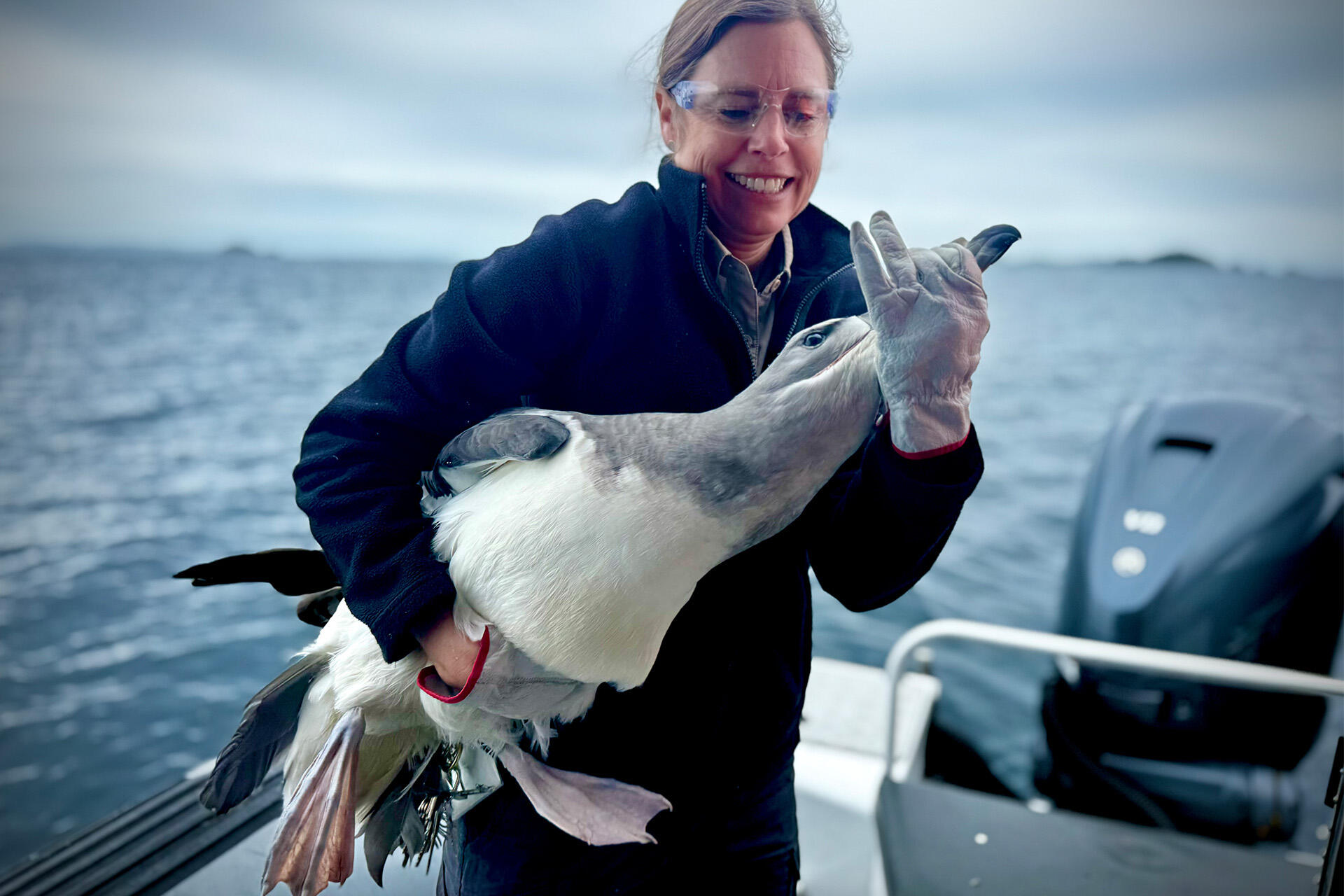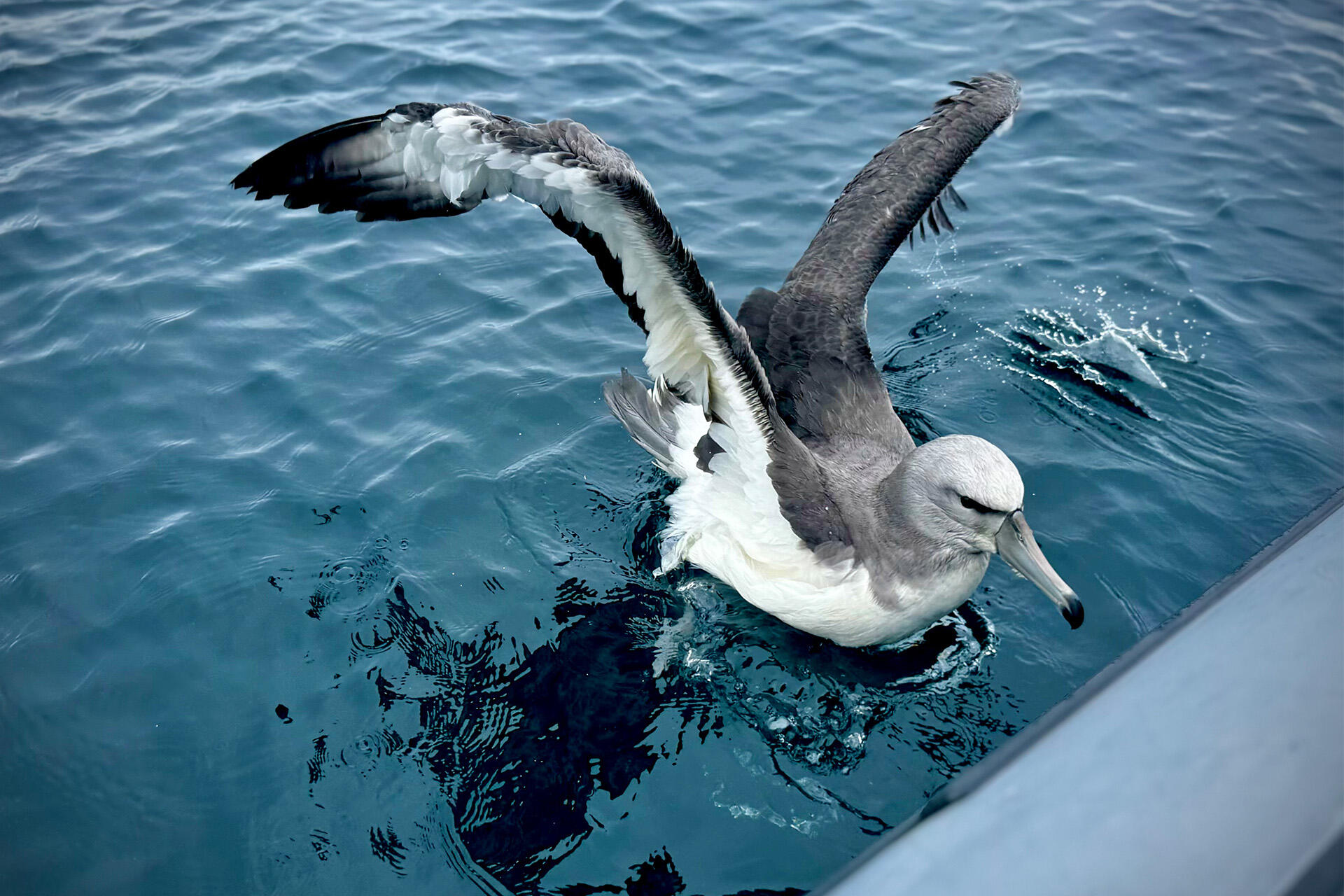As well as performing a full physical examination, our veterinary team began by administering fluids to rehydrate it before commencing tube-feeding - at first with an electrolyte solution, and then with a specialised fish slurry. Blood tests revealed a profoundly elevated white blood cell count - consistent with infection, so this toroa was immediately started on treatment. After stabilisation it was anaesthetised so that x-rays and endoscopic examinations could be performed.
Seabirds like albatross spend most of their lives soaring over open oceans, only coming to land to breed.
Our senior vet Adam says during hospitalisation, their heavy weight makes them susceptible to developing sores on the soles of their feet – known as pododermatitis.
“Preventing damage and soiling of their plumage is also essential, not just for flight but also for their ability to thermoregulate and retain their waterproofing. During rehabilitation, they must therefore be kept on padded, non-abrasive flooring, in a large enough space to allow wing extension, and with access to a clean pool. Albatross do not feed when on land and so additionally require assisted feeding throughout the rehabilitation process,” explains Adam.


